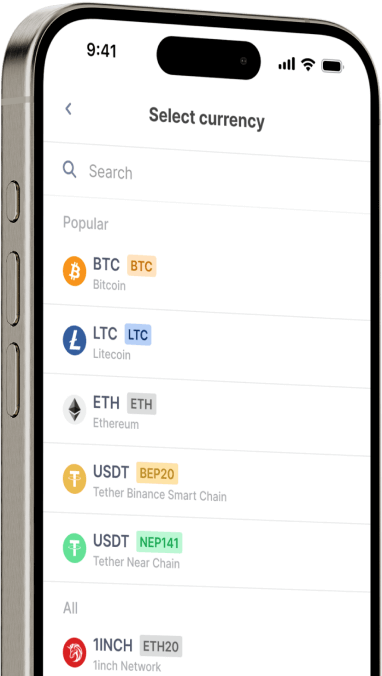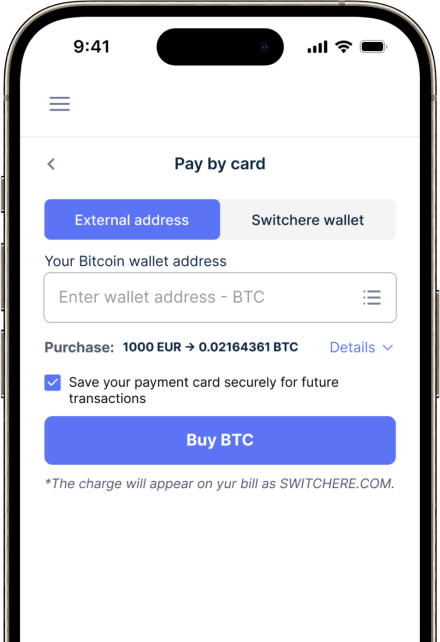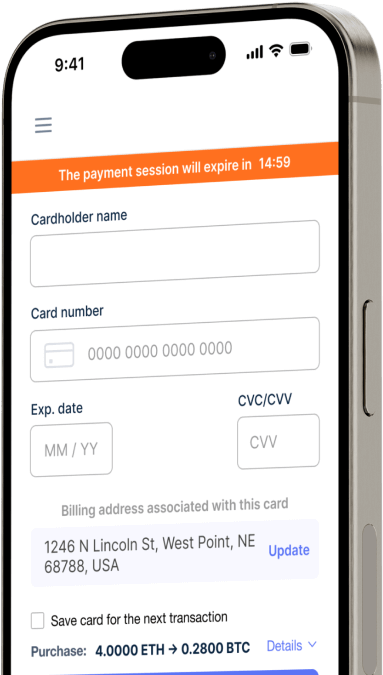Converteer
Japanese yen (JPY) naar Avalanche (AVAX) direct
Koop Avalanche (AVAX) met Japanese yen (JPY) gemakkelijk bij Switchere en profiteer van snelle, veilige transacties.
Over
Avalanche (AVAX)
Avalanche (AVAX) komt naar voren als een high-performance Layer 1 blockchain technologieplatform, zorgvuldig ontworpen om het kritieke schaalbaarheidstrilemma aan te pakken - het bereiken van decentralisatie, veiligheid en hoge doorvoer. Het primaire doel is om een robuuste en veelzijdige basis te bieden voor gedecentraliseerde applicaties (dApps) en aangepaste blockchain implementaties, bekend als subnetten. Dit gedecentraliseerde netwerk maakt gebruik van het innovatieve Avalanche-consensusprotocol, een familie van mechanismen die beïnvloed zijn door Snowball, waardoor transacties bijna onmiddellijk voltooid kunnen worden, meestal binnen twee seconden, waardoor het zich onderscheidt in het concurrerende landschap van platforms voor digitale activa. De architectuur van het platform bevordert een bloeiend ecosysteem voor complexe smart contracts en diverse Web3-infrastructuren.
De kernarchitectuur van Avalanche is uniek gestructureerd rond drie verschillende maar interoperabele ketens: de Exchange Chain (X-keten) voor het creëren en beheren van digitale activa, de Platform Chain (P-keten) voor het coördineren van validators, het volgen van actieve subnetten en het mogelijk maken van nieuwe subnetten, en de Contract Chain (C-keten) voor het uitvoeren van Ethereum Virtual Machine (EVM) compatibele slimme contracten. Dit multi-chain ontwerp faciliteert een breed scala aan use cases, waaronder geavanceerde DeFi-toepassingen, bedrijfsoplossingen en blockchain-gebaseerde gaming. De native utility token, AVAX, is een integraal onderdeel van de tokenomics van het ecosysteem; het wordt gebruikt voor het betalen van transactiekosten in het netwerk, het beveiligen van het platform door middel van staking door validators, deelname aan on-chain governance beslissingen en als gemeenschappelijke rekeneenheid tussen subnetten. Dit positioneert Avalanche als een belangrijke en aanpasbare infrastructuurlaag die gericht is op het ondersteunen van een nieuwe generatie gedecentraliseerde systemen en digitale grootboeken.
Koop andere 150+ cryptocurrencies voor Japanese yen (JPY)
Andere munten voor Japanese yen (JPY)
-
JPY naar ZRX
-
JPY naar 1INCH
-
JPY naar AAVE
-
JPY naar ACH
-
JPY naar ALGO
-
JPY naar TLM
-
JPY naar ANKR
-
JPY naar APE
-
JPY naar NFT
-
JPY naar API3
-
JPY naar APT
-
JPY naar ARPA
-
JPY naar AUDIO
-
JPY naar AVAX
-
JPY naar AVAX
-
JPY naar AXS
-
JPY naar BADGER
-
JPY naar BAL
-
JPY naar BNT
-
JPY naar BAT
-
JPY naar BNB
-
JPY naar BSW
-
JPY naar BSV
-
JPY naar BLUR
-
JPY naar BONE
-
JPY naar CTSI
-
JPY naar CELR
-
JPY naar CELO
-
JPY naar CEL
-
JPY naar LINK
-
JPY naar CHZ
-
JPY naar CHR
-
JPY naar C98
-
JPY naar COMP
-
JPY naar CFX
-
JPY naar PEOPLE
-
JPY naar CVX
-
JPY naar ATOM
-
JPY naar CTC
-
JPY naar CRV
-
JPY naar DAI
-
JPY naar DASH
-
JPY naar MANA
-
JPY naar DENT
-
JPY naar DGB
-
JPY naar DYDX
-
JPY naar XEC
-
JPY naar EOS
-
JPY naar ETC
-
JPY naar ENS
-
JPY naar ETHW
-
JPY naar FET
-
JPY naar FIL
-
JPY naar FLOKI
-
JPY naar GALA
-
JPY naar GNO
-
JPY naar ONE
-
JPY naar HBAR
-
JPY naar HOT
-
JPY naar HOOK
-
JPY naar ICX
-
JPY naar ILV
-
JPY naar IMX
-
JPY naar INJ
-
JPY naar ICP
-
JPY naar IOST
-
JPY naar IOTX
-
JPY naar JASMY
-
JPY naar JST
-
JPY naar KAVA
-
JPY naar KCS
-
JPY naar KSM
-
JPY naar KNC
-
JPY naar LDO
-
JPY naar LQTY
-
JPY naar LPT
-
JPY naar LOOKS
-
JPY naar LRC
-
JPY naar LUNA
-
JPY naar MKR
-
JPY naar MASK
-
JPY naar EGLD
-
JPY naar ALICE
-
JPY naar NEAR
-
JPY naar XEM
-
JPY naar NEXO
-
JPY naar NOT
-
JPY naar NMR
-
JPY naar OKB
-
JPY naar OMG
-
JPY naar ONT
-
JPY naar EDU
-
JPY naar OP
-
JPY naar OGN
-
JPY naar CAKE
-
JPY naar PAXG
-
JPY naar PENDLE
-
JPY naar DOT
-
JPY naar POL
-
JPY naar QTUM
-
JPY naar QNT
-
JPY naar RDNT
-
JPY naar XRD
-
JPY naar RVN
-
JPY naar REN
-
JPY naar RSR
-
JPY naar RLC
-
JPY naar RPL
-
JPY naar SFP
-
JPY naar SHIB
-
JPY naar SKL
-
JPY naar SXP
-
JPY naar STND
-
JPY naar STG
-
JPY naar XLM
-
JPY naar GMT
-
JPY naar STORJ
-
JPY naar STMX
-
JPY naar SUSHI
-
JPY naar SNX
-
JPY naar USDT (Polygon)
-
JPY naar USDT (AVAC)
-
JPY naar USDT (BEP20)
-
JPY naar USDT (ERC20)
-
JPY naar USDT (SPL)
-
JPY naar USDT (NEP141)
-
JPY naar USDT (FA2)
-
JPY naar USDT (TRC20)
-
JPY naar USDT (JETTON)
-
JPY naar XTZ
-
JPY naar GRT
-
JPY naar SAND
-
JPY naar TFUEL
-
JPY naar THETA
-
JPY naar RUNE
-
JPY naar TON
-
JPY naar TUSD (BEP20)
-
JPY naar TUSD (TRC20)
-
JPY naar TWT
-
JPY naar UOS
-
JPY naar UMA
-
JPY naar UNI
-
JPY naar USDC (Polygon)
-
JPY naar USDC (SPL)
-
JPY naar USDC (OP)
-
JPY naar USDC (BEP20)
-
JPY naar USDC (AVAC)
-
JPY naar USDC (ARB)
-
JPY naar USDC (ERC20)
-
JPY naar VET
-
JPY naar VRA
-
JPY naar WAXP
-
JPY naar WOO
-
JPY naar WLD
-
JPY naar WBTC
-
JPY naar WMINIMA
-
JPY naar XDC
-
JPY naar YFI
-
JPY naar YGG
-
JPY naar ZIL
Hoe Avalanche (AVAX) kopen
Veelgestelde vragen
-
Wat is de meest gebruikelijke manier om Avalanche (AVAX) te kopen met Japanse Yen (JPY)?
De meest gebruikelijke methode is het gebruik van een gereguleerde Japanse cryptocurrency-exchange die het JPY/AVAX-paar aanbiedt. Dit omvat het aanmaken van een account, het voltooien van KYC/AML-compliance, het storten van JPY via een binnenlandse bankoverschrijving en vervolgens het plaatsen van een order in het orderboek van de exchange. Dit proces dient als een directe fiat-on-ramp naar het Avalanche-ecosysteem.
-
Hoe worden gas fees voor Avalanche-transacties afgehandeld na een eerste aankoop met JPY?
Na de aankoop van AVAX met JPY vereist elke volgende blockchain-transactie op de C-Chain van Avalanche, zoals interactie met een dApp of het overdragen van een token, een gas fee. Deze vergoeding wordt altijd betaald in AVAX, niet in JPY. De AVAX-tokens die u hebt gekocht, worden gebruikt om deze kosten te dekken. Het vergoedingsmechanisme van Avalanche staat bekend om zijn efficiëntie, wat vaak resulteert in lagere transactiekosten in vergelijking met andere grote smart contract-platforms.
-
Kan ik mijn AVAX-tokens staken nadat ik ze met Japanse Yen heb gekocht?
Ja, zodra u AVAX-tokens met JPY hebt verworven en naar een compatibele digitale portemonnee hebt verplaatst, kunt u deelnemen aan staking. Dit houdt in dat u uw AVAX delegeert aan een validator op de Avalanche P-Chain. Staking helpt het Avalanche-netwerk te beveiligen, en in ruil daarvoor kunt u stakingbeloningen verdienen die in AVAX worden uitbetaald. Het is een kernfunctie van het Proof-of-Stake-consensusmechanisme van het netwerk.
-
Wat maakt het Avalanche-netwerk technisch uniek voor gebruikers die AVAX met JPY kopen?
De belangrijkste innovatie van Avalanche is de architectuur met Subnets, die aangepaste, applicatie-specifieke blockchains mogelijk maken. Het heeft ook een unieke drieketenstructuur: de C-Chain (voor EVM-compatibele smart contracts), de X-Chain (voor het creëren en verhandelen van digitale activa) en de P-Chain (voor staking en netwerkvalidatie). Dit ontwerp, aangedreven door het Snowman-consensusprotocol, biedt een extreem snelle time-to-finality voor transacties, een aanzienlijk voordeel voor gebruikers die interageren met dApps.
-
Wat zijn de beste beveiligingspraktijken bij het omzetten van JPY naar AVAX?
Gebruik voor veilige handel altijd een gerenommeerde, gereguleerde cryptocurrency-exchange in Japan. Schakel twee-factor-authenticatie (2FA) in op uw account. Overweeg na aankoop uw AVAX over te boeken van de exchange naar een persoonlijke digitale portemonnee waar u de privésleutels beheert. Zorg ervoor dat uw portemonnee de Avalanche C-Chain ondersteunt. Deze praktijk van zelfbewaring minimaliseert het risico op verlies van uw digitale activa door exchange-gerelateerde problemen.
-
Wat is het voordeel van het gebruik van een direct JPY/AVAX-paar in plaats van eerst JPY naar USD om te zetten?
Het gebruik van een directe JPY/AVAX fiat on-ramp is efficiënter en kosteneffectiever. Het stelt u in staat dubbele conversiekosten (van JPY naar USD, dan USD naar AVAX) en potentiële slippage bij twee afzonderlijke transacties te vermijden. Een direct paar biedt betere liquiditeit en een eenvoudigere weg om het digitale activum te verwerven, waardoor u onmiddellijk toegang krijgt tot het Avalanche-ecosysteem, inclusief de dApps en stakingsmogelijkheden op de P-Chain.




